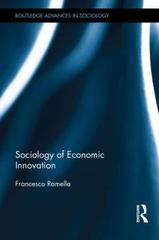Question
Problem 2. Consider the basic Solow model, where population (labor) grows at a constant and exogenous rate, n > 0 , with N t +
Problem 2. Consider the basic Solow model, where population (labor) grows at a constant and exogenous rate, n>0, with Nt+1=(1+n)Nt. Moreover, the aggregatee production function is of the Cobb-Douglas form:
Yt=AKtNt1
Where(0,1) is the extent of capital stocks t and t + 1, respectively, It is gross investment, and[0,1] is the depreciation rate of capital ( which is constant ).
(a) (i) Using (3), find a condition on investment per worker such that the economy is in the steady-state. That is, %Kt=n. Briefly explain.
(ii) What happens when the condition in (i) above is violated? Briefly explain and illustrate the required investment line.
(b) Write down the expression for output (or income), (2) in per capita terms. Furthermore, assume that people in the economy save a constant fraction, s of their income. Therefore, the actual amount saved and invested per persion is: syt=sf(kt). Illustrate f(kt) and sf(kt). Explain whyf(kt) is convave. Use algebra, but explain in the process, what dimminishing marginal poduct of capital is.
(c) On a new chart, illustrate the steady-state capital stock per worker. Focusing on the non-trivial steady-state ( not the origin ), briefly discuss the dynamical properties of the steady-state. That is, what happens to capital per worker and the standard of living outside the steady-state.
(d) Suppose the population growth falls ( n decreases ). How is this going to affect the standard of living ( output per capita ) in the steady-state? Briefly explain and discuss the transition to the new steady-state.
Step by Step Solution
There are 3 Steps involved in it
Step: 1

Get Instant Access to Expert-Tailored Solutions
See step-by-step solutions with expert insights and AI powered tools for academic success
Step: 2

Step: 3

Ace Your Homework with AI
Get the answers you need in no time with our AI-driven, step-by-step assistance
Get Started


